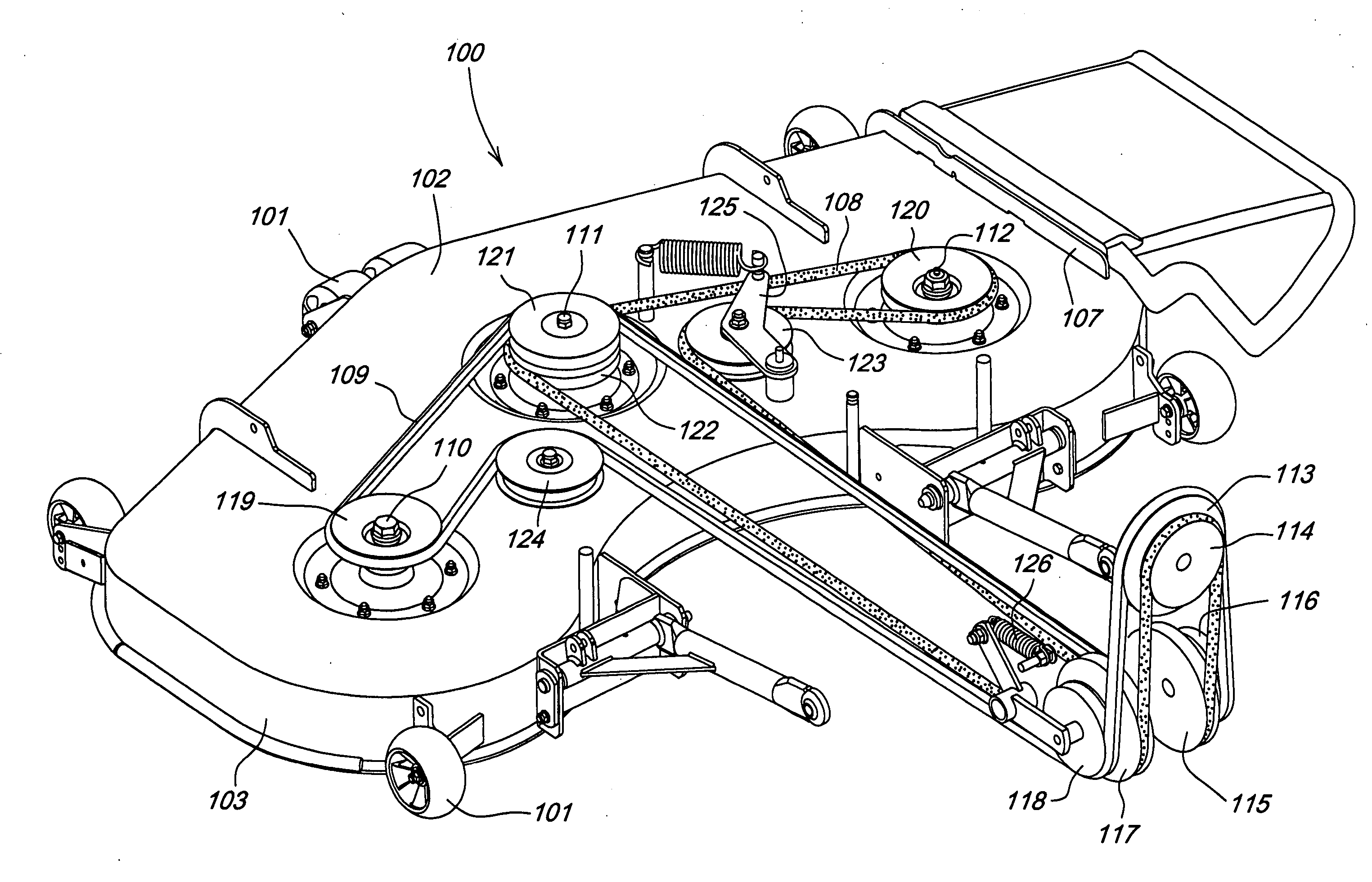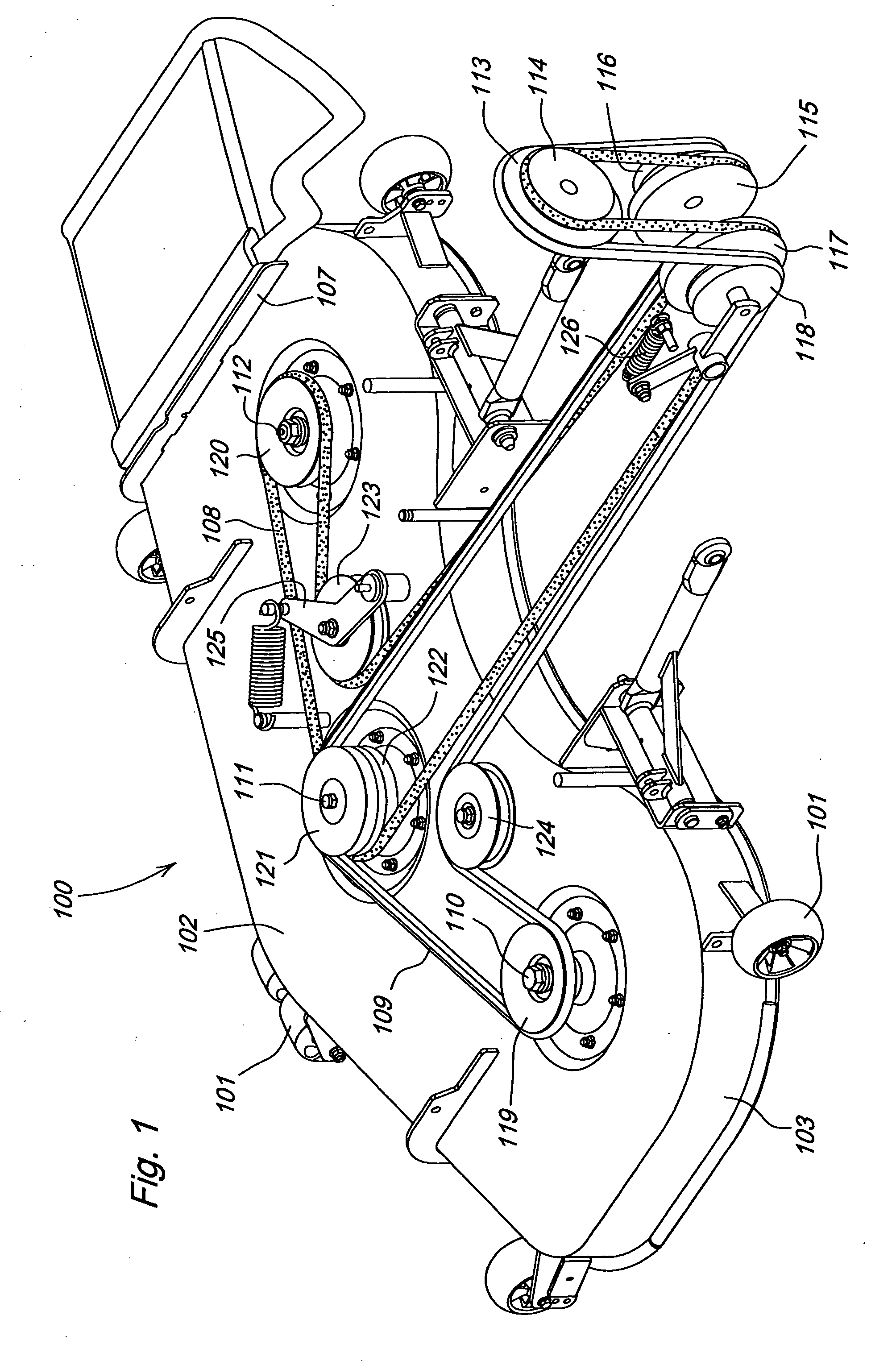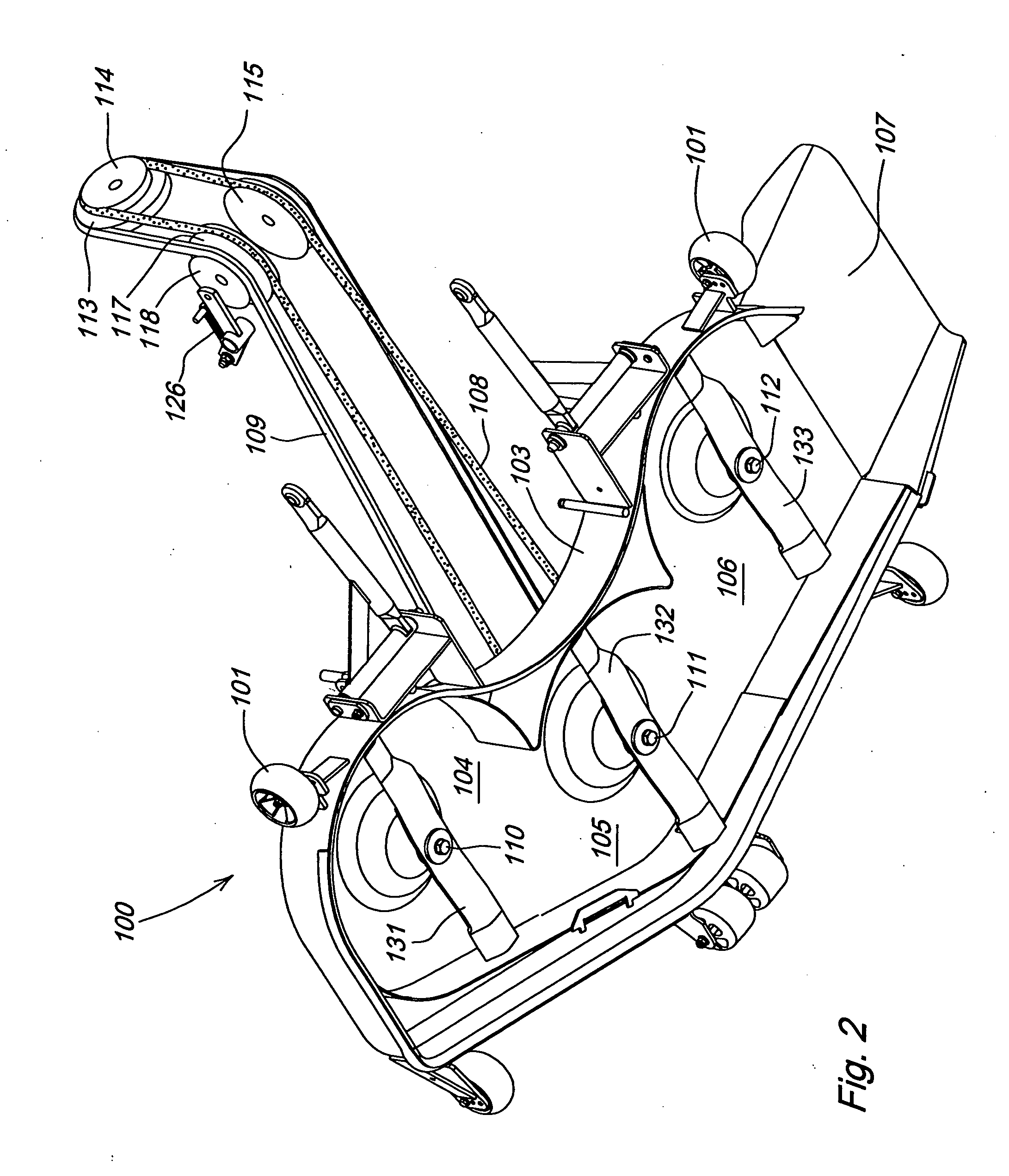Twin belt mule drive
a mule drive and belt technology, applied in the field of belt drive systems, can solve the problems of limited power a mule drive can transmit, thick and/or strong belts may not be sufficiently flexible to use in mule drives, and it is difficult to twist and change the orientation of such a belt, so as to achieve the effect of increasing the belt life and increasing the power
- Summary
- Abstract
- Description
- Claims
- Application Information
AI Technical Summary
Benefits of technology
Problems solved by technology
Method used
Image
Examples
Embodiment Construction
[0009]FIGS. 1 and 2 show a first embodiment of the invention, in which a twin belt mule drive is used on mower deck 100 to drive three rotary cutting blades 131, 132, 133. Mower deck 100 may be removably mounted to or suspended from the frame of a tractor or similar vehicle at or near the front or middle of the vehicle. The mower deck may have anti-scalp wheels 101 attached to its outer perimeter. The vehicle may have an internal combustion engine or other power source, a transmission, and one or more ground engaging wheels. The engine may provide at least about 15 horsepower to a horizontal drive shaft or PTO.
[0010] In one embodiment, mower deck 100 may have a top surface 102, downwardly depending sides 103, and an overall width of at least about 48 inches. The twin belt drive of the present invention is capable of driving significantly wider mower decks. Blades 131-133 under the mower deck may be housed in adjacent and interconnected cutting chambers 104-106. The middle cutting c...
PUM
 Login to View More
Login to View More Abstract
Description
Claims
Application Information
 Login to View More
Login to View More - R&D
- Intellectual Property
- Life Sciences
- Materials
- Tech Scout
- Unparalleled Data Quality
- Higher Quality Content
- 60% Fewer Hallucinations
Browse by: Latest US Patents, China's latest patents, Technical Efficacy Thesaurus, Application Domain, Technology Topic, Popular Technical Reports.
© 2025 PatSnap. All rights reserved.Legal|Privacy policy|Modern Slavery Act Transparency Statement|Sitemap|About US| Contact US: help@patsnap.com



